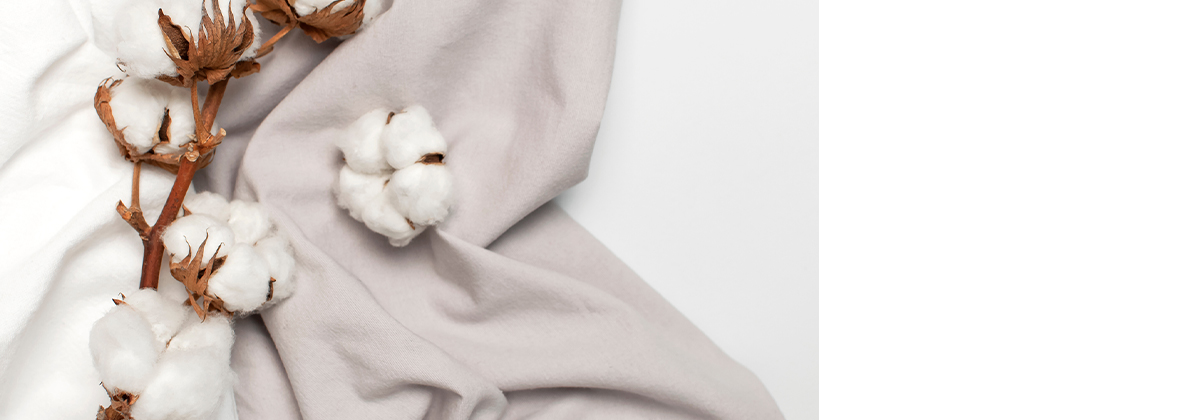10 Oct How to Wash Cotton Clothes?
Cotton fabric is made from natural plant fibers and is widely used in clothing, tablecloths, bedding, and everything from delicate children’s clothing to jeans. Cotton fibers produce comfortable and breathable fabrics, making their clothes affordable and durable. Although these clothes are usually ready to be used immediately after washing, the way to wash cotton clothes and take care of them dramatically impacts their health and longevity. In this article, you will learn how to wash cotton clothes and the best way to care for these clothes.
The steps of washing cotton clothes by hand
When it’s time to wash your clothes, you should pay special attention to how you wash your cotton clothes. First, remove any stains using a suitable detergent and cold water. Put the required amount of detergent on the stains before putting the clothes in the washing machine (follow the instructions on the package).
soaking
Place your cotton clothes in a small sink filled with cold water. After soaking the cloth for 15 to 30 minutes, gently rub the stain.
squeeze clothes
Roll your shirt, pants, and blouse in a large towel to absorb water or gently squeeze the clothes to remove excess moisture.
Washing
Fill the sink with cold water and add a few drops of laundry detergent or dishwashing liquid. Then immerse the clothes in the solution and spin it for a few minutes.
Rinsing
Rinse your cotton clothing using the cold water cycle. To avoid shrinking, set the wash setting to the gentlest setting possible. Shake the garment after removing it from the machine to minimize wrinkles. Use a hot iron to remove wrinkles from your clothing.
How to wash cotton clothes with a washing machine
Stain removing
If your cotton clothes have stains, remove them with a stain remover before putting them in the washing machine or washing them by hand. The proper amount of time to leave the detergent on the garment depends on how fresh the stain is. Different clothes fibers react differently to detergents and stain removers. When using a stain remover product for the first time on colored cotton fabrics, incredibly dark colors, test it on a seam or inside edge to ensure the material is resistant to dye run-off.
Choosing the suitable detergent and softener
Choosing solid and high-performance detergents is the best strategy for removing environmental pollution, odors, and stains. However, if your clothes are only lightly soiled, using any cotton detergent will work, even if you hand wash cotton.
Determination of water temperature
In cases where cotton clothing is in close and continuous contact with the body surface, such as underwear, socks, or pajamas, lukewarm or cold water is the best washing temperature to prevent them from drying, stretching, and fading. The lower the water temperature, the easier it is to keep lighter or darker colors from fading. You should wash underwear, socks, pajamas, bedclothes, bath towels, and kitchen towels with hot water to remove bacteria, pollution, and body secretions.
Set the wash cycle
All-cotton garments can be cleaned using most wash cycles. Regular washing works well for most cotton clothes and linens. If your cotton garment is made of lace or embellished, it’s best to hand wash it or use the gentle cycle of the washing machine. The washing cycle can vary from 10 to 45 minutes, depending on the type of cycle and the number of clothes.
Adjust the drying time
Over-drying cotton shortens your clothes and causes excessive and permanent wrinkling in your favorite garment. It’s recommended to use the dryer’s constant pressure or lower temperature option to keep cotton clothes in good condition. Sheets, towels, and kitchen tablecloths can be dried at a higher temperature to complete the drying process faster. But finally, the drying time depends on the volume and type of clothes.
If you take the clothes out of the dryer while still slightly damp, your cotton clothes will need very little ironing. To prevent excessive wrinkling, air dry your clothes. You can dry these clothes on a clothesline outdoors or indoors. Although the sun’s UV rays help to whiten cotton clothes, hang colored cotton clothes out of direct sunlight to prevent color fading.
The dos and don’ts of washing
- To prevent the color of cotton clothes from fading, turn them inside out before washing them. Don’t load the washing machine with a large volume of clothes, and try to use cold water if possible.
- High temperatures and hot water can cause cotton fibers to shrink. The shrinking rate depends on how cotton clothes are washed, the texture of the fabric, and how the cloth is woven and measured in the textile factory.
- Try to wash cotton clothes less often, especially denim, to preserve their shape, color, and quality.
- Cotton fabrics usually don’t suffer as much from static electricity adhesion as synthetic fabrics. So, you can also use dryer sheets to dry your cotton clothes.
- Fabric softeners make cotton fibers softer and reduce wrinkles. However, fabric softener is optional, and you don’t have to use it to care for cotton clothes.
Maintaining cotton clothes
Cotton is a durable fabric that you can easily use in everyday clothes. To keep cotton clothing in optimal condition, fold cotton pants and place them in a closet. You can hang cotton shirts in the closet to prevent wrinkles. When you store 100% cotton clothes for long periods, you don’t have to worry about moths or willow larvae eating plant fibers (moths prefer animal fibers). You only have to worry about the carpet beetles and their larvae that feed on the cotton. However, it’s possible to prevent the penetration of these insects into cotton clothes by using natural repellants, such as cedar oil.
Although vacuum-sealed plastic containers work for short-term storage of cotton clothing (and carpet beetles can’t get into these containers), your clothes need to breathe in the long term, so opt for fabric containers for long-term storage and put the clothes in cold, dry, and dark places. Avoid storing cotton clothes in attics and basements where the temperature and humidity are unstable.
A solution to prevent cotton from drying out
One of the few problems with washing cotton clothing is that it tends to bleed, especially during the first wash or dry cycle. There’s nothing worse than seeing your favorite outfit shrink before you even wear it. But the good news is that you can avoid this problem by being a little careful about how to wash cotton clothes. During the garment manufacturing process, yarn and fabric are stretched a bit. When you put your clothes in the washing machine or dryer, the heat can cause the fibers to return to their natural size. Even sunlight can cause cotton clothes to fade.
Solution
- Change how you wash cotton clothes to hand washing or use cold water and the gentle cycle of your washing machine.
- Avoid putting any clothes made of natural fibers in the dryer. Instead, invest in a few folding clothes hangers and let your cotton clothes air dry gently. You can also hang your cotton clothes on a line to dry.
- If you must put your cotton clothes in the dryer, use the lowest heat possible to avoid overdrying the clothes.
Essential points in drying cotton clothes
Whether you wash your natural fiber clothes by hand or a washing machine, you will get the best results if you dry your cotton clothes without heat. Drying at high temperatures is the most common cause of shrinkage in cotton clothes. Avoid putting your clothes in the dryer and dry them on a clothes rack or hanger away from indirect sunlight. You can also use clothes hangers to keep the clothes in shape while drying.
Advantages of using cotton fabrics
People who use cotton fabrics can benefit from the advantages of using this fabric, which include the following:
- They are compatible with the skin.
- Since this fabric allows airflow to pass through, it causes less sweating than other fibers.
- There’s no cotton pelleting in clothes.
- If a person sweats while wearing them, this clothing will absorb body odor much later than other clothing.
- They don’t cause sensitivity.
- You feel cool with them.
- They have high resistance and life.
- Easy washing and staining are also two advantages of cotton fabric.
- Another advantage is its softness.
- And finally, clothes made of cotton fibers are thicker and warmer, so they can protect the human body in the cold.
To wrap up,
Cotton fabric is made of natural plant fibers and is widely used for sewing tablecloths and clothing ranging from baby to linen pants and jeans. Cotton clothes are affordable and durable, but to be able to use them for many years, we need to take care of them properly. Always check the label before putting them in the washing machine. If it’s written on them that the clothes should be dry cleaned only, you shouldn’t put them in the washing machine. If you don’t have the opportunity or patience to wash your clothes, you can count on the specialized NeatEx team. With the most advanced tools and the latest knowledge, we will deliver your clothes of the best quality as soon as possible. Don’t damage your valuable clothes with improper washing. NeatEx washes your clothes best and ensures you have clean and tidy clothes.




Sorry, the comment form is closed at this time.